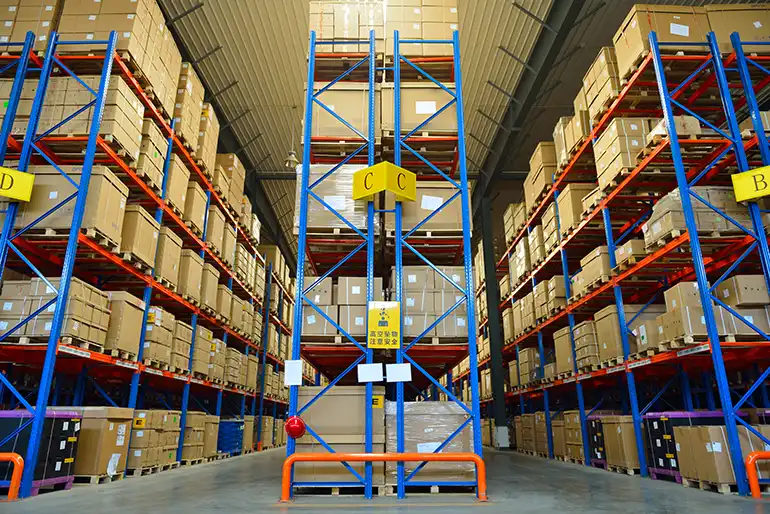Keeping your warehouse or distribution center clean can take a lot of time and effort. The sheer size of these types of spaces can often take internal teams several hours, if not days, to properly sanitize. Yet cleaning a warehouse facility is just as important as keeping an office space or school sanitized. When you make sure distribution centers stay disinfected and orderly, you’ll help keep your workforce healthy and reduce the number of disruptions to your operations. This helps you lower the risk of employee sick days and lost productivity. To create a comprehensive warehouse cleaning checklist and reap the associated benefits, don’t forget to include the following six steps.
1. Create Cleaning Schedules and Goals
Planning for efficient warehouse cleaning is one of the best ways to ensure that it actually gets done. How do you do this? Create goals and cleaning schedules to coincide with each. It’s a lot easier to keep your distribution center spotless by engaging in small projects over the course of the week rather than trying to do one massive deep clean every other week or so. Warehouses and other types of industrial facilities get dirty fast, so the more on top of things you are, the less likely you’ll need to spend an entire day dedicated to fixing things up.
To help you create schedules, break down your needs by task. Think about what you need to do daily, weekly, and monthly in order to keep things organized. Some of the items on your daily warehouse cleaning checklist should include:
- Emptying trash bins and recycling
- Putting everything back into its place
- Double checking pallets and shelves to make sure they’re safe
- Cleaning any visible spills or debris as they occur
- Disinfecting the bathroom
- Clearing the loading docks and grab bars
- Filling soap dispensers, paper towels and toilet paper in the bathroom
- Sweep and mop floors
Some of the most important items for a weekly warehouse cleaning checklist should include:
- Dusting and sanitizing blinds or window treatments
- Tackling hard-to-reach areas
- Checking overhead light fixtures
- Cleaning storage rooms
- Organizing pallets
Your monthly warehouse cleaning checklist should also include:
- Cleaning the break room
- Addressing any clogs or backed-up sink and floor drains
- Checking for signs of mold and mildew
- Securing the weather stripping around doors
- Replacing entryway mats or cleaning them
- Deep cleaning floor coatings
- Power washing loading docks and other high-traffic areas
- Inspecting fire alarms and sprinkler systems
2. Prepare the Warehouse or Distribution Center
Adhering to the above schedule may seem like a lot, but to make each item go faster it’s important to take the proper preparations. This means making sure that any signs of debris are always picked up as they’re seen, and heavy machinery is in its dedicated spot. You should also regularly check on cleaning supplies and inventory to make sure you’re prepared for the task at hand.
3. Engage in Some Preliminary Cleaning
Preliminary preparations can also help create a more expedited schedule. If you notice any large, visible signs of dirt or grime, take care of them before you do a full warehouse cleaning. This can help reduce the amount of time that’s spent on each of your checklist items throughout the month. Make sure you’re using the appropriate cleaning chemicals, especially if you’re tackling any mold or mildew.
4. Zoning Cleaning Throughout the Day
You can also create zones that each employee is responsible for. This is especially beneficial for companies that have a distribution center where employees stay in one part of the facility for the duration of their shift. Make zone cleaning a requirement for them to end their shift, as this will give the next employee a safe and healthy zone to work with. This should include sweeping, removing debris, wiping down any machinery or equipment, and making sure that the area is organized. This type of warehouse cleaning will also help reduce the transmission of germs or pathogens.
5. Include Ongoing Floor Care
One thing that’s often overlooked in distribution center cleaning is floor care. However, maintaining a clean floor is the best way to ensure that it’s safe and that the risk of workplace injury is minimized. Since the majority of warehouse-related injuries happen due to slips, falls, or trips, this is a step you don’t want to forget. You can achieve ongoing floor cleaning by keeping things picked up, mopping up any spills, and tackling stains with the appropriate cleaning materials for your floors.
6. Disinfection for Ongoing Safety
Finally, no warehouse cleaning checklist is complete without disinfection. Make sure that every employee understands the importance of disinfecting their area, especially if they’re working in close spaces. When you forego disinfection, you’re only engaging in surface-level cleaning that pushes the germs from one place to another. Although this can give off the illusion of cleanliness, it doesn’t kill illness-causing bacteria, viruses, and pathogens. As we’re still in the midst of a pandemic, disinfection is of utmost importance.
Educating your staff about the benefits of keeping your warehouse or distribution center clean is also an integral part of ongoing health and safety. Warehouse cleaning requires a team effort, especially if you’re moving a lot of inventory around every week. Consider scheduling monthly meetings to go over goals, talk about what’s working, and try to find ways to make their day-to-day distribution cleaning easier.
How to Take Your Distribution Center Cleaning to the Next Level
After reviewing the above information regarding best practices and steps for your distribution center cleaning, it’s understandable to get a little overwhelmed. Rather than trying to use your internal team to keep your warehouse safe, hire a professional cleaning company with warehouse cleaning experience. Bee Line Support offers professional cleaning to warehouses, distribution centers, factories, and other commercial businesses. This means you’ll get comprehensive services that help with asbestos removal, lead removal and abatement, mercury cleanup, mold removal and remediation, industrial vacuuming, and decontamination. We’re also trained in specialized machinery and safety equipment to ensure that your industrial tools are taken care of properly—especially when it comes to hazardous chemical removal and repairing machinery.
When you want to take your warehouse cleaning to the next level, Bee Line Support can help. We use state-of-the-art HEPA filter vacuums, Green Seal-certified disinfectants, and microfiber towels to eliminate bacteria completely. Bee Line Support also offers upholstery-cleaning services, industrial carpet cleaning services, vacuuming, garbage removal, and comprehensive corporate janitorial services. We also understand that distribution centers, cold storage facilities, and warehouses need cleaning and maintenance that other facilities don’t. That’s why we offer everything from sweeping and mopping to breaking down boxes and more. Our professionals are here to make sure your facility is cleaned from corner to corner. We also offer services to help you banish COVID-19 from your workplace.
Bee Line Support will work with you to deliver warehouse and distribution cleaning services that go above and beyond industry standards. Safety hazards don’t sleep, and neither do we. We offer 24/7 emergency services to help you keep your facility under control. When you’re dealing with surprise spills or monumental messes, Bee Line Support is here to help.
Call Bee Line Support at 312-BEE-LINE or message us today to get started on the path to cleanliness!
About The Author
Jesse Parra
author
It’s hard to find a more reliable manager than Jesse. When it comes to your needs, concerns, and questions, you can count on Jesse to help you out. Jesse is a native to Chicago and is a proud pet parent to his chihuahua named Peter. In his spare time, you can find Jesse practicing his photography skills, cheering on the Cubbies, and seeking out the best taco joints in town! His favorite aspect of working with Bee Line is the incredible teamwork, his friendly coworkers, and the many opportunities for growth.




